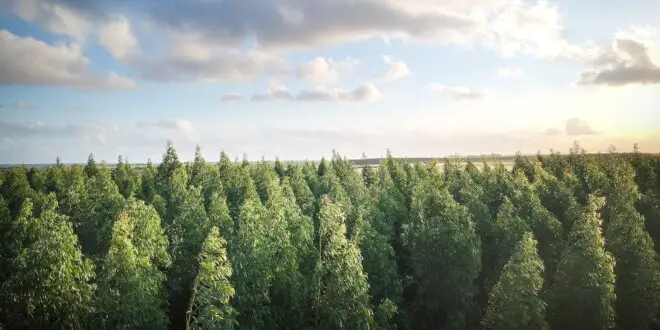As human civilization continues to progress and innovate, the consequences of our actions on the environment become increasingly apparent. The industrial revolution and the growth of technology have allowed us to achieve incredible feats, from exploring the depths of space to curing diseases that were once considered fatal. Yet, our pursuit of progress has come at a cost: the degradation and destruction of our planet’s ecosystems.
In this blog post, we will explore the environmental cost of progress and the human impact on the environment on the natural world. From deforestation and pollution to climate change and habitat loss, our actions have had far-reaching consequences, and the effects continue to compound with each passing day. By analyzing the past and present challenges that face our planet, we can learn valuable lessons and make informed decisions to minimize the extent of damage. The environmental challenges we face are complex and require a multipronged approach involving governments, businesses, and communities.
Increased Production of Goods and Materials
Increased production of goods and materials has been one of the defining characteristics of human progress in modern times. However, it has come at a significant cost to our environment. The mass production of goods releases pollutants into the air, water, and soil, having harmful effects on natural ecosystems. These pollutants have led to impacts such as climate change, loss of biodiversity, and degradation of natural resources.
The increase in production has also resulted in the depletion of non-renewable resources like fossil fuels and minerals, which can have lasting impacts. As we continue to prioritize progress over sustainability, it is important to recognize and evaluate the environmental costs of our actions, implementing measures to mitigate and reduce these impacts. Only by doing so can we ensure a sustainable future for both humans and nature.
Deforestation
Deforestation is a major environmental problem and one of the adverse impacts of human progress. It involves the clearance and removal of forests and their ecosystems for various purposes, including agricultural activities, logging, urbanization, and industrialization. The practice has been going on for centuries, but its effects are becoming more noticeable as the world population continues to grow and demand for natural resources increases. Deforestation is responsible for a range of ecological, economic, and social consequences.
Here are some of the ways deforestation affects our environment:
- Loss of biodiversity and habitats. Deforestation destroys the natural habitats of plants, animals, and microorganisms, reducing species diversity.
- Climate change. The removal of trees leads to an increase in greenhouse gas emissions, contributing to global warming and climate change.
- Soil erosion. Without its tree cover, the soil can be easily eroded by wind and water, leading to reduced fertility.
- Increased flooding and drought. Deforestation changes the landscape of an area and can lead to an increased risk of flooding as well as prolonged periods of drought.
In spite of growing awareness of its impacts, deforestation is still a prevalent practice in many parts of the world. However, there are a number of conservation and reforestation efforts aimed at mitigating the effects of deforestation and promoting sustainable land use practices.
Pollution From Industrial Processes
The industrial revolution brought about significant advancements in technology and manufacturing processes. However, it also resulted in unprecedented environmental degradation, including pollution from industrial processes. The impacts of industrial pollution have been well-documented, with numerous hazardous pollutants released into the air, water, and soil.
Emissions from factories and power plants, chemical spills, and waste dumping are examples of industrial activities that contribute to environmental degradation. These pollutants pose a significant threat to human health, wildlife, and ecosystems, leading to increased rates of respiratory illnesses, cancer, and birth defects. It is essential to implement regulations and technologies to minimize these environmental costs of progress, acknowledging the vast impacts of industrialization on the natural environment.
Use of Hazardous Chemicals
Industrial activities such as manufacturing, mining, and transportation heavily rely on the use of toxic chemicals, which pollute waterways, harm aquatic life, and harm human health. Many of these chemicals are persistent and do not degrade easily, meaning they can continue to contaminate the environment for years. It is crucial for companies to adopt responsible chemical management practices to minimize the usage of hazardous chemicals and to handle and dispose of them safely.
Governments also play a critical role in regulating the production, trade, and disposal of hazardous chemicals, ensuring that human and environmental health is prioritized over economic profits. It is only through the collective efforts of companies, governments, and individuals that we can mitigate the environmental costs of progress and preserve the natural world for future generations.
Loss of Biodiversity
The phenomenon of loss of biodiversity is one of the most concerning environmental costs of human progress. Biodiversity is the variety of life on Earth, encompassing all living organisms and their interactions with each other and with the environment. The loss of biodiversity occurs when the number or variety of species, or the diversity of ecosystems, declines due to human activities such as deforestation, pollution, urbanization, overfishing, and climate change. This loss has severe consequences for human well-being, as we depend on ecosystems for the provision of food, clean water, air, and medicines.
Moreover, biodiversity loss affects the functioning of ecosystems, reducing their resilience and ability to recover from disturbances. Therefore, it is crucial to adopt measures that reverse this trend, such as the conservation of natural habitats, sustainable use of natural resources, and reduction of carbon emissions. The preservation of biodiversity is critical not only for the sake of nature but also for our own survival and prosperity.
Overconsumption of Resources
The continuous extraction and use of non-renewable resources such as fossil fuels, minerals, and timber have led to the depletion of these resources. The overconsumption of energy, water, and food in developed countries has also contributed to this problem. The environmental impact of resource overconsumption is seen in deforestation, soil degradation, water scarcity, and climate change. To address this issue, individuals, corporations, and policymakers should prioritize the adoption of sustainable resource management practices.
This includes reducing waste, promoting recycling, adopting renewable energy, and preserving natural habitats. Failure to address the overconsumption of resources will continue to have negative environmental impacts and lead to a future with fewer resources available for future generations. As such, it is essential to acknowledge the environmental cost of progress and take immediate action to reduce our ecological footprint on the planet.
In Conclusion
The story of human impact on nature is a cautionary tale of the cost of progress. Our technological advancements have provided us with numerous benefits but have also come at a great environmental cost. It is vital that we learn from our mistakes, recognize and correct our negative impacts on the natural world, and ensure that we implement sustainable practices to prevent further degradation of our planet. Each of us can do our part by making conscious choices to reduce our ecological footprint, supporting sustainable initiatives, and advocating for environmental protection policies.
 Being Human
Being Human




